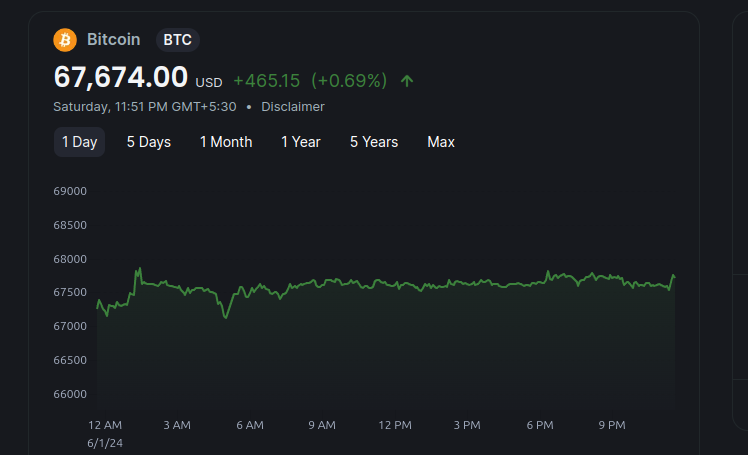Bitcoin Scalability: Can It Really Scale?
 Lokesh Jha
Lokesh Jha
Bitcoin, the pioneering cryptocurrency, has revolutionized the financial landscape with its decentralized, peer-to-peer network. However, as Bitcoin's popularity has grown, so have concerns about its scalability. The question of whether Bitcoin can scale effectively to handle a larger volume of transactions remains a critical issue. This article explores the scalability challenges faced by Bitcoin, the proposals on the table, and the implications of these potential solutions.
Understanding Bitcoin Scalability
Scalability refers to the capacity of a blockchain network to process an increasing number of transactions. For Bitcoin, scalability is primarily constrained by its block size and the time it takes to add new blocks to the blockchain.
Current Limitations
Block Size: Bitcoin's block size is limited to 1 MB. This restricts the number of transactions that can be included in each block, leading to slower transaction times and higher fees during periods of high demand.
Block Time: New blocks are added approximately every 10 minutes. This fixed interval also limits the rate at which transactions can be processed.
These limitations have sparked an ongoing debate within the Bitcoin community about the best ways to scale the network to accommodate a growing user base.
Proposals for Bitcoin Scalability
Given Bitcoin's open-source nature, numerous ideas have been proposed to address its scalability issues. Some of the most prominent proposals include:
Increasing Block Size
One straightforward approach to improving Bitcoin's scalability is to increase the block size. Proponents argue that larger blocks can hold more transactions, thereby reducing congestion and lowering fees.
Pros: Increased throughput and reduced transaction fees during peak times.
Cons: Larger blocks require more storage and bandwidth, potentially leading to greater centralization as smaller nodes might struggle to keep up with the increased data demands.
Segregated Witness (SegWit)
SegWit is a protocol upgrade that changes the way transaction data is stored. By separating (or "segregating") the witness data (signatures) from the transaction data, SegWit effectively increases the block size limit without actually increasing the block size.
Pros: SegWit reduces the size of individual transactions, allowing more transactions per block. It also addresses the issue of transaction malleability, making second-layer solutions like the Lightning Network more viable.
Cons: Adoption requires a network-wide upgrade, and not all users and services have implemented SegWit.
The Lightning Network
The Lightning Network is a second-layer solution designed to enable fast and low-cost transactions by creating off-chain payment channels between users. Transactions within these channels are instantaneous and do not need to be recorded on the blockchain until the channel is closed.
Pros: Dramatically increases transaction throughput and reduces fees. It also allows for microtransactions, which are impractical on the main Bitcoin blockchain due to high fees.
Cons: Requires users to lock up funds in payment channels, and the network is still in its early stages, facing issues related to liquidity and routing.
Bitcoin Unlimited
Bitcoin Unlimited is a proposal that allows miners to determine the block size themselves, rather than having a fixed limit. This approach aims to create a more flexible and scalable network by adapting to the needs of the users and miners.
Pros: Flexibility in block size can help accommodate varying transaction volumes, potentially leading to a more efficient network.
Cons: There is a risk of centralization, as larger miners might have more influence over block sizes. This could also lead to forks and fragmentation within the Bitcoin community.
Can Bitcoin Really Scale?
The question of whether Bitcoin can truly scale is complex and multifaceted. Each proposed solution comes with its own set of advantages and trade-offs. The scalability of Bitcoin depends on finding a balance between maintaining decentralization, ensuring security, and improving transaction throughput.
Current Progress
SegWit Adoption: Since its activation in 2017, SegWit has seen increasing adoption, with many wallets and exchanges now supporting the protocol.
Lightning Network Growth: The Lightning Network has been steadily growing, with more nodes and channels being established. However, it still faces challenges related to user experience and liquidity.
Ongoing Debates: The Bitcoin community remains divided on the best approach to scalability, with debates continuing around block size increases and the implementation of new technologies.
The Future of Bitcoin Scalability
The future of Bitcoin's scalability will likely involve a combination of on-chain and off-chain solutions. As the network evolves, continuous improvements and innovations will be necessary to handle the growing number of users and transactions.
Research and Development: Ongoing research into new technologies and protocols will play a crucial role in enhancing Bitcoin's scalability.
Community Consensus: Achieving consensus within the Bitcoin community is essential for implementing significant changes. Open-source development allows for diverse input and experimentation, but it also requires collaboration and compromise.
Layered Solutions: Combining multiple approaches, such as increasing block sizes, adopting SegWit, and expanding the Lightning Network, may provide a comprehensive solution to scalability challenges.
Conclusion
Bitcoin scalability is a critical issue that will determine the future success and adoption of the cryptocurrency. While there are several promising proposals on the table, each with its own benefits and drawbacks, the path forward will require careful consideration, innovation, and collaboration within the Bitcoin community. As the network continues to grow and evolve, finding effective solutions to scalability will be key to ensuring that Bitcoin remains a viable and efficient means of transaction in the digital age.
Subscribe to my newsletter
Read articles from Lokesh Jha directly inside your inbox. Subscribe to the newsletter, and don't miss out.
Written by

Lokesh Jha
Lokesh Jha
I am a senior software developer and technical writer who loves to learn new things. I recently started writing articles about what I've learned so that others in the community can gain the same knowledge. I primarily work with Node.js, TypeScript, and JavaScript, but I also have past experience with Java and C++. Currently, I'm learning Go and may explore Web3 in the future.